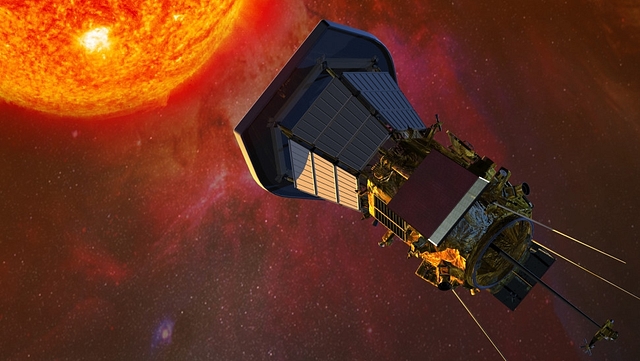
NASA’s Solar Probe, Humanity’s First Mission To The Sun, Set For Launch On 31 July
The solar probe of the National Aeronautics and Space Administration, which will take humanity closer to the Sun, is set for launch on 31 July, PTI reports.
This will be humanity’s first mission to the Sun. The probe, which will be sent into space on board the Delta IV Heavy launch vehicle, will orbit directly through the solar atmosphere. It will be closer to the surface than any human-made object has ever been. The probe will face brutal heat and radiation to reveal fundamental science behind what drives the solar wind, the constant outpouring of material from the Sun that shapes planetary atmospheres and affects space weather.
Named after astrophysicist Eugene Parker, discoverer of what we now call the solar wind, the probe will explore the Sun’s outer atmosphere and make critical observations to answer questions about the physics of stars.
NASA’s probe will fly into the corona, the uppermost part of the sun’s atmosphere which lies less than four million miles from the surface.
After lift off from Cape Canaveral on 31 July atop a United Launch Alliance Delta IV Heavy rocket, the spacecraft will race toward the sun at approximately 720,000 kmph, arrive at the sun in November and then spend seven years studying the star.
Protected by the probe’s one-of-a-kind heat shield which is capable of searing temperatures of 1,400 degrees Celsius, key parts of the spacecraft (including instruments and solar cells) will remain closer to room temperature.
Data collected by the probe will be "the last piece of the puzzle to model the sun and its effect on the Earth," said Johns Hopkins University's project scientist Nicky Fox.
Currently, the spacecraft is undergoing comprehensive testing.